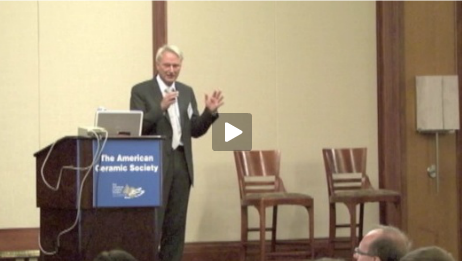
|
Besides giving Rossner his regal nickname, Siemens has recognized him as one of its top innovators in Global Technologies, the business’ R&D wing. In this video presentation, made at an ACerS Ceramic Leadership Summit meeting, Rossner provides a nicely detailed presentation on how Siemens approaches the development of its technical strategies, beginning with emerging megatrends. It then tries to project how various internal competencies and competitive advantages-such as ceramic science and engineering-enable the development of components and systems to produce successful applications in the marketplace. In brief, Rossner reports that Siemens is playing close attention to megatrends related to increased urbanization, demographic shifts, climate change and globalization. With these in mind, the company has made a strategic decision to pursue technologies and applications related to opportunities in “sustainability.” Siemens defines sustainability as “the capacity to endure” and breaks sustainability down into three target components: environmental, social and economic. Ceramics already has been a proven solution provider for Siemens (e.g., LED lighting, gas turbines and CT imaging) so ceramics is being turned to again, this time to deliver advances in global sustainability. In his talk, Rossner expounds on several new work project areas where ceramic materials are expected to play important roles, such as ultrahigh efficiency power generation, high-voltage direct current power transmission, renewable energy sources, “e-mobility,” Smart Grid, advanced medical diagnostic tools, efficient electronics and water/air quality. Rossner also provides many insights about how advancements in ceramics are being driven both by “traditional” fields of ceramic research (e.g., structural, functional, multifunctional and adaptive ceramic materials) and emerging perspectives related to materials interfaces, “intelligent” ceramics, simulation and modeling, and low-temperature process and manufacturing. 59 minutes. |
